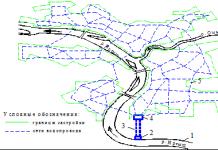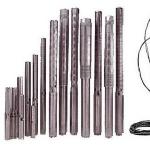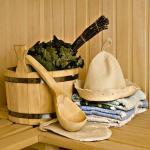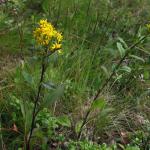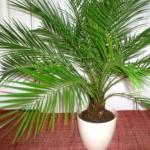This little animal can be found in the garden, in the summer cottage, as well as in the garden. The shrew feeds on various insects, which abound in such places. Despite this, these animals bring the owners a lot of trouble. This article explains why this small animal, similar to mice, but having a long proboscis, appears on the site and how to deal with it, by what methods.
As already mentioned, the shrew has an outward resemblance to a mouse, but differs from it in a long proboscis and tail. In temperate latitudes, it is more necessary to deal with two types of shrews: the pygmy many-toothed and the tiny shrew. As a rule, the 2nd type has become more widespread.
It is possible to distinguish this animal from other similar animals by a number of signs:
- The shrew has a more elongated head with a movable proboscis of a lighter shade.
- The body, 18 to 25 cm long, is covered with short but dense hair.
- The fluffy coat is dark brown with a gray tint.
- The tail of a shrew is thicker and longer than that of a mouse.
- The size of a tiny shrew does not exceed 5 cm.
- The shrew moves quickly and makes long tunnels underground, modeled on wormholes.
- As a rule, it is found mainly in middle latitudes. Prefers more humid places with sufficient food. They can often be found near water bodies, where they occupy empty holes of mice and moles.
- The shrew does not feed on potato tubers, as its diet consists of organisms of animal origin living in the thickness of the earth.
- The nest of this animal is not large, therefore hardly noticeable, lined from the inside with dry branches and leaves.
- Each animal has its own "hunting grounds", several tens of square meters in size.
- The diet of the shrew consists of small and large insects, earthworms, toads and small lizards.
- The shrew stores excess food in the nest, which is located underground.
- The shrew has a fast metabolism, therefore, it has to actively move underground most of the time in search of food.
- A shrew can fight to the death for its plot.
Shrews, like other similar creatures, constantly carry out natural migrations, in search of suitable places for their livelihoods. But this does not mean at all that it can appear on any site, since certain conditions are needed for this. Even if there is a lot of food on the site, but there is little moisture on it, then the shrew is unlikely to appear. Hard ground that is not watered or does not have natural moisture does not allow the animal to dig long passages. Therefore, this animal is most often found near water bodies or in areas that are watered on a regular basis.
This small animal, due to its activity, digs long and numerous passages. At the same time, the structure of the soil is disturbed, and the root system of many cultivated plants planted in the garden is also damaged. As a result, crop losses are possible, and significant.
In this regard, when a shrew appears on the site, the owners begin to panic and they begin to think about how to get rid of this little pest. Moreover, you need to start fighting with them immediately, otherwise a whole colony of shrews may appear on the site.
Before choosing a method of struggle, you should weigh everything, because:
- This animal does more good than harm. Shrews actively destroy many pests that inhabit the site, which bring only harm and no benefit.
- The favorite food of the shrew is the bear, wood lice, May beetles, earthworms, lizards and frogs.
- When holes are constantly burrowed, this improves the supply of oxygen to the soil.
- The downside is that the shrews are quite prolific (up to 40 cubs in a litter) and too many holes lead to a negative result. Therefore, in such conditions, there is too little benefit from this animal, but it interferes with the normal growth of vegetable, cereal and other crops. If the shrews dig through the entire garden, then it is unlikely that anything will grow on it.
Since this animal brings more benefit, under certain conditions, than harm, the fight against it is mostly humane. The main thing is to prevent the shrew from multiplying at a fast pace on the site, as this will cause significant damage to the crop.
To start a fight with this animal, you need to study its habits, and most importantly, what attracts them. If such favorable conditions are not created for them, then they themselves will be able to control the process of life, or even leave the site altogether. There are 2 such conditions: the presence of food and high humidity. If regular daily watering is carried out on the site, then it makes sense to refuse it. Perhaps this is the main factor for them.
Often the owners themselves are to blame for the appearance of certain types of pests on their site. In order not to start a real war, it is better to immediately analyze what caused the appearance. It is possible that you will not have to wage any struggle, it is enough just to abandon any activities that do not particularly affect the yield, but only attract pests. If you study the nature of the life of this animal, then you can easily deal with it by forcing it to leave the site.
To get rid of such a neighborhood, it is enough to use a number of methods:
- Fill holes with plain water. The method is quite effective if you know exactly where these moves and their configuration are located. Otherwise, the effect will be zero. First you need to stock up on water, at least one bucket. Action must be fast. After that, the shrew will have to leave the site.
- Use foul-smelling foods or substances. To do this, you can use rotten fish or meat. Substances such as naphthalene, gasoline, kerosene are also suitable. Rags are moistened in them and laid out near the entrance to their minks. At the same time, one should not forget that these products will smell bad not only for the animals, but also for the owners and neighbors.
- Plant some plants in the garden, which have a negative effect on these animals with their aroma. Such plants include mint, wormwood, thyme, lentils, imperial hazel grouse, etc.
If there are too many shrews on the site, and before that no one paid attention to the problem, then it is impossible to do without chemicals that quickly reduce the number of individuals. To cope with them, it is enough to use any means to combat rodents. Chemical control agents are sold either in specialized stores or in hardware stores. Alternatively, the drug can be bought in the online store. The following may be effective:
- Nutcracker. Represents a dense mass of green. This remedy kills rodents such as mice and rats, but can also be used against shrews. The substance is laid out next to the burrows. If the bait is eaten, then the animal will die.
- Hunter Antirodent. This substance is sold in the form of briquettes, which include cheese, flour and other additives that attract both moles and shrews. Animals die from suffocation.
- rat death. From this poison shrews die quickly enough. It is a highly toxic drug that causes suffocation and internal bleeding. But it is better to use it in extreme cases.
On a note! The use of chemicals is not recommended in some cases. This is especially true when there are cats and dogs on the farm that can accidentally eat the bait. After all, you can’t keep them in the house, and they walk wherever they want. As a result, they may die. Chemistry is no less dangerous in the presence of small children who immediately pull unfamiliar objects into their mouths. As a result, severe poisoning and possibly fatal.
Repellers
Many people know about the existence of electronic ultrasonic repellers that have a negative effect on rodents, and not only on them. The only problem is that such products act not only on pests, but also on pets. At the same time, many experts point out that ultrasonic waves, under certain conditions, have a negative impact on humans. In addition, the animals that are in the thickness of the earth are unlikely to be “processed” by these devices.
Mechanical repellers
These types of repellers are easy to manufacture and do not require additional costs. To do this, you need to take wooden sticks, dig in the garden (hammer) and hang cans on them. Under the action of the wind, they will hit each other, creating noise. The noise is transmitted along the stick to the ground, which creates uncomfortable conditions for the life of the animals.
The method, although simple, has its drawbacks. The main disadvantage is the noise, which affects not only the animals, but also the person, and especially the neighbors.
Often, the function of an ultrasonic repeller also includes the function of magnetic resonance. In other words, the device creates a force magnetic field that negatively affects the animals. As a result of this action, the pests have a feeling of panic, as they lose their orientation in space. As a result, after a while, they go to another site.
Basically, these are compact devices that can operate both from batteries and from the mains. They have a directional action, so the device can be installed on an outbuilding, in the direction of the garden.
The purchase of such a device requires the study of its characteristics, so as not to harm pets and humans.
No one has yet managed to protect their site by 100% from the appearance of various pests, including shrews. If there are few shrews, then there is only one benefit from them, but over time their population increases, and their benefit turns into harm. Unfortunately, this happens late and you have to think about how to get rid of them, otherwise serious crop losses are possible.
There are a number of options for using various homemade devices or planting plants that help a person fight the invasion of animals. For example:
- Repellers based on a wooden stick with plastic or tin cans on it work well. The noise that occurs under the action of the wind scares away underground burrowing animals.
- Planting plants such as beans and other legumes, as well as mints, wormwood, and other plants that have a persistent aroma, also helps to control the number of these animals on the site.
Unfortunately, a shrew feeds not only on harmful insects like caterpillars, beetles and others. She digs the soil with her oblong nose, gnaws on carrot roots, beets, etc. from which the plants begin to wither. Breaking through the moves spoils the roots of peppers, strawberries, tomatoes, do not refuse seeds of cultivated plants. Spoils the beautiful view of the lawn and flower beds. Their sense of smell and touch is very well developed, another ability is echolocation.
IMPORTANT! Pests do not live long - only 1.5-2 years, but the female's litter reaches up to 14 pcs. on a scale of approximately 40 pieces per hectare.
How to fight?
Exist "grandfather" ways of fighting We, for example, scatter rotten pieces of herring on the ground. It is believed that a strongly unpleasant odor will help get rid of them. And the same from the owners ... Unless, of course, this aroma bothers you, then try leaving the herring for a few days.
One of the popular, cheap ways to get rid of shrews in a summer cottage is shown in this video:
The effect has deep digging of soil about 70 cm. shovel. But if the site is not large, then of course you can work hard. Try stuffing eggshells into the mink or feed the neighbor's cat, preferably tricolor, which is better than conventional to hunt mice, rats.
It is believed that the pest dislikes legumes, spurge and ordinary marigolds. Plant them along the edges of the garden so that the animals do not enter, besides, the flowers will delight you with their colorful outfits.
It helped some in the moves of the shrew to throw in burning coals or, at the same level with the site, dig a three-liter empty jar like a trap near the hole. How to deal with a shrew in the garden and get rid of it? There are several effective ways.
How to find a nest?
Shrew photo:
Most of these rodents live in damp places. live alone.
dig their own burrows occupy an empty house others (moles, mice).
Are settled in the voids of stumps and in fallen tree trunks, under deadwood, rarely in human buildings.
The nest is insulated with dry leaves or blades of grass. Each of them has own feeding area, several tens of square meters in size.
Chemical Methods
It is not very humane to use poison and you need to resort to it last, but there is an effectiveness from the application. Purchase mouse poison or poisonous food like Rat Death, Nutcracker, Hunter Anti-Rodent. You need to pour it into each mink or spread it near the entrance to the dwelling.
IMPORTANT! Pay attention to the presence of children, pets before using the poison, it is dangerous!
Poison gases or gas bombs, but if the tunnel is branched, then a small pest will simply run away. Therefore, you need to use it immediately, as soon as the shrew takes a fancy to the site. The same principle applies to filling holes with water.
Pour diesel or gasoline into the mink. Some gardeners use smoke bombs. They try to use sharp-smelling reagents like Creatol, Ekar, Pomethanol, etc. In general, everything that has a strong smell, but is not recommended for use near plantings, trees, fruit bushes.
IMPORTANT! The use of gasoline and diesel fuel may cause a fire.
Mechanical
You can get rid of shrews in the country or summer cottage with traps and traps, which are commonly used with rat, mouse bait. A mole repeller is also suitable for a shrew. Mechanical means in the form of tin turntables are placed throughout the site, and they work in the presence of wind. Constant noise will make the shrews uncomfortable, because of this they will move to a more peaceful place.
Electric repellers have the same properties as mechanical ones, but they are powered by electricity and can be turned on at will. Electronic repellers create low-frequency noise within 400 Hz with a radius of about 20 meters. It has no effect on humans and domestic animals, but is even more unpleasant for the shrew. They will react to such a sound quickly and immediately leave the site, taking with them moles, snakes, mice, etc.
Repelling and prevention
 Reliable application, in which the fight against shrews will give a result, slate or sheets of iron will be dug around the perimeter of the site. Building material must be dug in to a depth of one and a half meters.
Reliable application, in which the fight against shrews will give a result, slate or sheets of iron will be dug around the perimeter of the site. Building material must be dug in to a depth of one and a half meters.
On pegs about a meter high, p Place plastic bottles cut off 1/3 from the neck or cans. The same turntable is only free, which is very pleasing.
These "rumblers" rattle in the wind, thereby frightening the shrew. It is better if they are on the site with a permanent place of residence, just in case.
Plant for prevention. between rows of carrots or beets garlic and onions that give off a strong odor. Cannabis can help control shrews. It must be laid in freshly dug minks.
When rotting, it has a specific smell that shrews will not like, they will soon leave the site. The tool will work for a couple of years. A shrew in the house can only appear by chance, so it makes no sense to catch it. The animal will go away.
In most cases, the destruction of shrews is inevitable. Rummaged, spoiled flower beds, lawns and destroyed crops diminish all the benefits that the animal brings. Use poisons as little as possible. After all, you want to put a lot of work to grow an environmentally friendly product for yourself.
If you find an error, please highlight a piece of text and click Ctrl+Enter.
Small rodents, shrews, can often cause a lot of trouble in a summer cottage. They, like moles, do not feed on the roots of cultivated plants, however, in search of worms and larvae, they break through many passages in the area. At the same time, not on purpose, the shrew will inevitably damage the root system and root crops of many significant plants. Who will like this?
Shrews build their own underground dwelling, but not infrequently they can use the abandoned mink of another animal, a half-rotted stump and various outbuildings available in their summer cottage. Housing is additionally insulated with dry grass, moss and fallen leaves. When everything is ready, it's time to think about numerous offspring.
However, not everything is so bad. Each shrew owns a territory up to 30 m2, so the descendants will not be concentrated on your site. But how then to explain the astonishing speed with which new tunnels appear? It's all about the fast metabolism of this animal. The constant feeling of hunger makes the shrew with a vengeance to seek out fresh larvae, worms, small lizards and toads.
For the winter, the shrew does not hibernate, but still continues its underground work.
We list the main methods that will help drive the annoying animal from your site:
- Ultrasonic repellers against rodents have proven themselves well. This method is not only extremely simple and effective, but also humane in relation to the animal.
- The simplest sound repeller can be easily made by yourself. Take thin metal rods a meter long and stick them well into the ground. Place upside down aluminum juice or beer cans on the top end. At the slightest wind, vibration will occur, which will be transmitted through the metal pin to the ground. This method will scare away many underground pests from your site.
- It can be made even easier. At an angle of 45 degrees, in places accessible to the winds, glass bottles from various drinks are dug into the ground. The sound created when the wind blows inside the bottles will scare away the shrews.
- If a dog or a cat regularly appears in your summer cottage, shrews and moles, most likely, they themselves will prefer to keep a respectful distance from this place.
- Along the perimeter and in the intervals between cultivated plants, garden crops that repel shrews can be planted: garlic, onions, peppers, etc.
- Important plantings can be protected by solid sheets of tin and slate dug into the ground around them to a depth of about 40 cm (adjacent, perpendicular sheets should be tightly pressed against each other, without gaps).
- Some summer residents use the same traps that are set on rats.
- Poisons are sold in specialized stores, which should be used with great care.
The shrew is the smallest mammal in the world and is ubiquitous. Such animals live in the steppe, mountains and forests. They got this name because they like to dig in the upper loose layer of the earth. Thus, they look for insects for themselves. In Russia, the white-toothed shrew has become widespread. But it is not as harmless as it might seem at first glance. Due to the fact that it constantly stirs up the topsoil, various crops suffer. So sometimes you have to use various options to get rid of the animal in your summer cottage.
Chemical methods of dealing with shrews at their summer cottage
Chemical poisons are a radical way to deal with shrews, while the most effective. Excellent results have been seen with the poison. For these purposes, you can use drugs such as the Nutcracker, Rat Death, Hunter anti-rodent.
Nutcracker from a shrew
How to get rid of the animal in the garden - mechanical methods
To combat shrews in the country, you can use traps and traps, which are often used to lure rats and mice. A mole repeller will be an excellent option for a shrew. Mechanical traps in the form of rigid pinwheels can be placed throughout the site.

Mole repeller
But they start to work in strong winds. Shrews do not like the constant noise, as a result of which they move to another place.
Electric scare away
These devices, by analogy with mechanical ones, function from electrical ones. You can turn them on as you wish. Electronic type repellers produce low-frequency noise within 400 Hz with a radius of 20 m.

Electric mole repeller
Such repellers do not work on pets and humans, but they are unpleasant for shrews. They react very quickly to the noise that has arisen and leave the site along with moles, mice and snakes.
Folk remedies
There are many proven home methods of rodent control. Of course, it will not work to call them quite effective, but they are suitable as a temporary measure.
flooding with water
Some gardeners and summer residents use this method of dealing with shrews. They just take and fill the rodent holes with water. But since the animals are quite small, and underground they can have a large number of minks, this method cannot be called effective.

Pouring mole holes with water
It only works if there are several individuals of rodents on the site and the exact locations of their location are known. Of course, shooting at such animals with a gun or sending poison gas into a mink is also not effective.
deep digging
Sometimes, to combat shrews, they can use the method of deep digging of the site. This method is considered time consuming, but quite effective. But do not think that the animals will leave the site for good.

Deep digging of mole holes
But to reduce their number is quite realistic. As soon as they find themselves homeless, they will want to leave this area in search of another place. But this does not always happen, and new minks can be seen in the garden.
Bad smell
Shrews have an excellent sense of smell and do not like the smell of rotten fish. Thus, pieces of fish can be spread over the site, deepening it into minks. You can use fishmeal as a fertilizer.
Having heard an unpleasant aroma, the animals will begin to leave the site. You can also use more specific flavors of kerosene, naphthalene or ammonia to fight.
The matter impregnated in these compositions should be placed in minks. Of course, a 100% guarantee cannot be achieved, since shrews can make new workarounds for themselves and bypass the bait.
But what is the best and most effective remedy for ants?
Installing a barrier
To protect the site from shrews, you can install a barrier. A fine mesh of plastic or metal is perfect for this. It should stand around the perimeter of the garden. Dig it to a depth of 1.2 m. On the surface, you can leave 10-15 cm of the grid. It can later be fixed to the fence. Such a design will block all underground passages for the shrew.
On the video - how to get rid of a shrew in a summer cottage:
planting
Considering various options for combating shrews, it is worth noting that there are certain types of plants, when planted, rodents begin to leave the territory in a hurry. It will also be interesting to know how it happens. So shrews don't like beans and spurge. In the garden, you can plant as many peas and beans as possible. It may not be possible to completely get rid of small animals, but it is quite possible to reduce their number.

Planting plants from a shrew
Ordinary marigolds can also be used to fight animals. To do this, you will need to dry the culture, finely grind it and sprinkle it over it before digging the site. It is known that the shrew is repelled by the smell that this plant emits. Marigolds can also be planted along the edges of the garden, then the animals will not enter it. As for the plant itself, it is completely unpretentious in its care and can be an excellent decor element for your garden. Another unpretentious plant is turnip, and here, it is indicated in this article.
Homemade traps
If you do not want to spend money on buying ready-made traps, then you can try to make your own. To do this, you have to use the following options:
- Take a piece of small diameter pipe. Install shutters at both ends. They must function inwardly. As soon as the animal buries its nose into one of the shutters, it will slightly open its way until it hits another shutter. Thus, she will not be able to open the exit for herself and be trapped.
- This design is considered the simplest. It's called a wire trap. It is necessary to install a spacer near the entrance to the mink. As soon as the rodent touches it, the fixation mechanism is activated. Now it is only necessary to remove the caught rodents from the trap from time to time.
On the video - homemade traps from a shrew:
Do not think that shrews are harmless animals. If they are available in the garden, then you are unlikely to be able to grow a full-fledged crop. But if you use the presented methods of dealing with animals, then there is a high probability that the rodent will be neutralized and leave the site for good.
For large agricultural lands, a small shrew can do more good than harm. But the owners of summer cottages are puzzled by the question of getting rid of the pest by any means. Since, as a result of its activity, numerous underground passages are created, which endanger the entire future harvest due to damage to the root system of plants. From our article you can find out what the animal looks like, what are the pros and cons of its stay on the site, how to find a nest, how to get rid of a shrew in the garden with the help of chemicals, folk remedies and repellents.
Shrews are commonly referred to as one of the smallest land mammals. With their very modest dimensions, these creatures always do a lot of harm in the country. In addition to the fact that these nimble intruders are able to dig almost all the land in the garden in a couple of days, they also love to eat insects, including useful ones.
If you notice damaged plants, then other animals are operating on the territory.
In addition to this feature, shrews have external distinguishing features. Such an animal from afar looks like a field mouse. But he has a more elongated muzzle, thicker and longer tail. In the summer cottage in the regions of our country, the most common are many-toothed (such an animal is also called the baby shrew) and tiny shrews. At the same time, the shrew is the smallest representative in its family. The body size of an adult does not exceed 5 cm. The wool is characterized by a light yellow color. It is the shrews of this species that give gardeners the most trouble. There is a version that the animals came to Europe in the holds of ships. Outwardly, shrews are animals with a grayish-brown coat that grow up to 7 cm. They are highly prolific. During the season, the female brings up to 4 litters. Childbearing age occurs in females by 1 - 2 months. In order to save your crop and get the shrews out of the garden, you need to act immediately when they are found, until the number of pests has become threatening.
Video "Who is a shrew"
From the video below you will learn and see what this animal is.
What is the harm and benefit
Shrews have a natural ability to quickly digest food. Therefore, around the clock they are puzzled by its extraction. They eat insects and larvae that come across on the way.  During the day, an adult eats a number of beetles and worms, almost 6 times its own weight! And the pest can have up to 80 meals a day. Having chosen a certain territory, all shrews in the garden may not create new moves, but use those left, for example, by moles. Pests gnaw on the root system of plants, root crops, especially lawns get a lot of harm from their activities. Mowed grass can be spoiled by the teeth of animals within a few days.
During the day, an adult eats a number of beetles and worms, almost 6 times its own weight! And the pest can have up to 80 meals a day. Having chosen a certain territory, all shrews in the garden may not create new moves, but use those left, for example, by moles. Pests gnaw on the root system of plants, root crops, especially lawns get a lot of harm from their activities. Mowed grass can be spoiled by the teeth of animals within a few days.
The benefit of staying such animals in the country is to improve the aeration properties of the earth due to the creation of underground passages by them. After that, cultures get the opportunity to fully grow and develop. The dead crop and damaged lawns make you forget about all the benefits of finding uninvited guests in the garden and garden, and also think about how to deal with a shrew.
How to find a nest
The task of the gardener before starting a merciless pest control is to find their nests. Rodents prefer to settle in damp places and live alone. They tend to dig holes on their own or occupy the empty ready-made housing of mice or moles. 
Still shrews can be found in the voids of stumps or tree trunks that have fallen to the ground, under deadwood, occasionally they settle down in people's buildings. Rodents cover the bottom of the nest with found grasses and foliage for the purpose of warming.
Each of the animals has a feeding area. Its dimensions often reach several tens of square meters.
Methods of dealing with chemistry
Due to the frequent appearance of this type of pest, gardeners are interested in information about who the shrew is, how to deal with it with effective modern methods.
Chemical poisons cannot be considered humane, their use can be called a radical way to deal with shrews. Poison has shown itself well over the years. You can use the preparations "The Nutcracker", "Rat Death", "Hunter anti-rodent".  It is necessary to pour it into each mink. You can also sprinkle the product near the entrance. When using chemicals, take safety precautions so as not to harm the health of children and pets. When using "chemistry" be sure to protect yourself. Put on body protection clothing, gloves on your hands, a mask or respiratory respirator. Read the instructions carefully, use the drug only in the recommended dosages.
It is necessary to pour it into each mink. You can also sprinkle the product near the entrance. When using chemicals, take safety precautions so as not to harm the health of children and pets. When using "chemistry" be sure to protect yourself. Put on body protection clothing, gloves on your hands, a mask or respiratory respirator. Read the instructions carefully, use the drug only in the recommended dosages.
Folk methods
What to do if shrews are operating everywhere on the site? How to catch them, how to get them out of your territory? Not all gardeners today want to use chemicals, considering them harmful to the health and condition of the soil. There is a rational grain in this. In view of this, many land owners continue to use the experience of our ancestors accumulated over the years.
It is realistic to solve the problem by getting rid of shrews with the help of gas bombs or poisonous gases. In this case, the pests flee. Works in some cases and pouring water into holes through a watering hose. But in order to breed animals in this way, you need to have a large supply of water.



It helps to pour diesel fuel and kerosene into minks. Some summer residents prefer to use smoke bombs. Reagents with a strong odor are used. These include Pomethanol, Ecar, Creatol. But in this way it is not advised to use in a place where trees, fruit bushes, plants are planted.
Mechanical methods also allow getting rid of shrews. Traps and traps make it possible to get a caught pest through bait, which is also used for rats.  The effect of some odors, which has been known for many years to irritate the sensitive organs of smell of animals, is widely used. For example, shrews do not tolerate the aromas of naphthalene, kerosene, and rotting fish. Natural repellents are also used. Plants that can scare away pests are imperial hazel grouse, wormwood, mint, peas, beans, lentils.
The effect of some odors, which has been known for many years to irritate the sensitive organs of smell of animals, is widely used. For example, shrews do not tolerate the aromas of naphthalene, kerosene, and rotting fish. Natural repellents are also used. Plants that can scare away pests are imperial hazel grouse, wormwood, mint, peas, beans, lentils.
Repelling and prevention
To protect your site from the penetration of uninvited guests from neighboring sites, digging around the perimeter of your sheets of iron or slate helps. Such building materials are advised to deepen a maximum of one and a half meters. In order to scare away the underground inhabitants, plastic bottles or cans placed on pegs, previously cut off in the neck area, are also used. Such turntables work when there is wind, they are free, which cannot but please summer residents.
